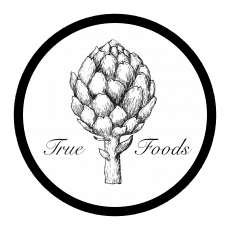Wild Herb Pesto with Quinoa – “Wild as the herbs”
Wild as the herbs. The name i a little tribute to the family we have found here in Amsterdam. “WIld as the moon” is the name of the party that the Gardens of Babylon tribe organizes every month to honor the full moon. Thank you for you :*
Today we want to share with you a little recipe with the herbs of the early summer. This recipe is inspire by my mum. She came back from the garden and brought fresh wild herbs & a bunch of green veggies from the Demeter farm close by. This is such a vibrant, healthy & fresh dish & that is why we want to share it with you today.
Little disclaimer: Be careful when you go to collect wild herbs & always take care not to harvest them in parks where dogs could have “marked” them or close to carstreets.
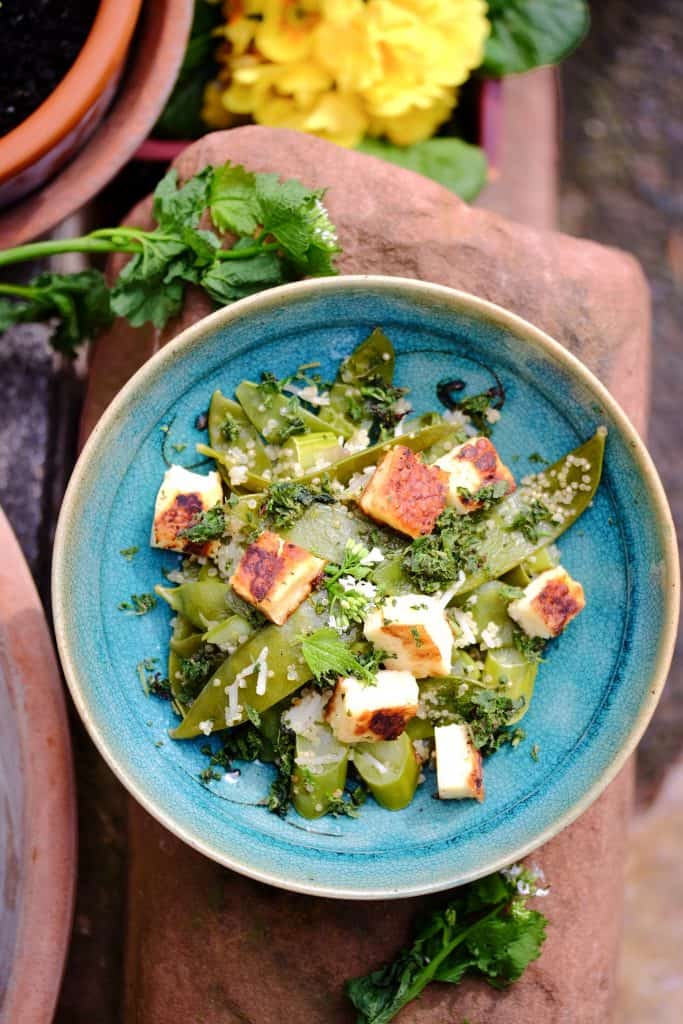
Wild Herb Pesto with Quinoa by Truefoodsblog
Garlic Mustard
(Knoblauchrauke)

Garlic Mustard
- High in vitamin C & A
- early spring
- distinctive garlicky smell and taste. Really nice for pesto
- “Garlic mustard can invade relatively undisturbed forests. Once established, it can displace native wildflowers like trilliums (Trillium sp) and trout lily (Erythronium americanum). It hinders other plants by interfering with the growth of fungi that bring nutrients to the roots of the plants”
- “Garlic mustard seeds are easily spread by people and animals. They can remain in the soil for up to 30 years and still be able to sprout. The plant can grow in a wide range of sunny and fully shaded habitats, including undisturbed forest, forest edges, riverbanks and roadsides. Garlic mustard does not provide a valuable food source for native wildlife” (londonmiddlesexmastersgardeners)
Wild Garlic
(Bärlauch)

Wild Garlic
- Where: Dense clusters of green spears thrust from the woodland floor in spring: these are ramsons, better known as wild garlic and they are a sign that the woodland you are walking in is very old.
- When: Late spring, may to june the flower is present
- Flavor: strong flavor, slightly spicy, distinctive, close to garlic
- what: flowers and leaves edible. Perfect as fresh pesto (Countryfile)
Ashweed
(Giersch)

Ashweed
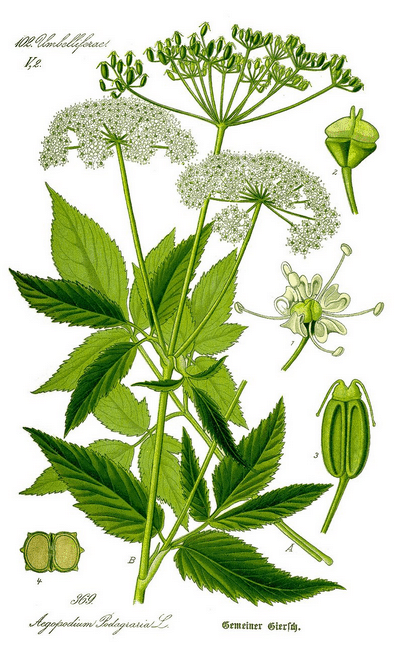
Ashweed
not to confuse with the poisonous “poison-hemlock”
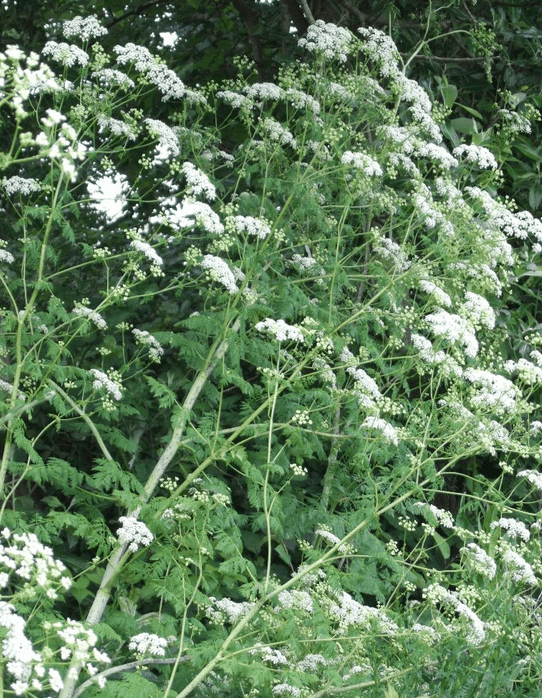
POISON HEMLOCK
- When: Spring to late autumn (flower from June to July)
- where: loves nitrogen-rich soils (good indicator), loves gardens, shadowy-moist forests,
- flavor: fresh like parsley, cooked like spinach, fine distinctive taste
- what: anciently used as medicine (not scientifically proven) against arthritis, scorbut, pain and has a detox effect.
- what to eat: young leaves eaten raw as salad or topping. older ones as pesto, cooked or as soup. Eating flowers can result in slight diarrhea. (Wikipedia & personal knowledge)
French Sorrel & Blood Sorrel
(Schildampfer)

French Sorrel
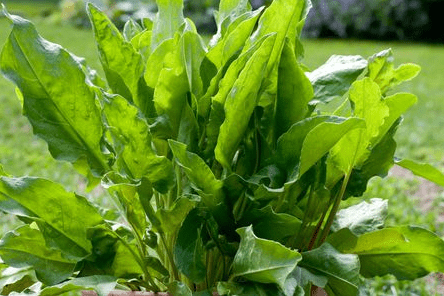
French Sorrel
- When: perennial so basically the whole year around
- Where: gardens, wild grasslands
- What: Eat the leaves. You can harvest them throughout the season. Used in mixed salads, sauces, soups, cheese dishes and pork and fish dishes. Because of the high acidity levels found in sorrel, cooking with it may discolor some metallic pots. Very high in Vitamin C, potassium and iron.
- flavor: very acidic, lemon-like
- important: it contains oxalic acid which can be an issue for people with certain health conditions.
Burnet
Pimpinelle

Salad Burnet

Salad Burnet
When: perennial, basically every time between spring & fall. need 70-100 to mature. Adaptable for poor soil conditions
Where: dry & sunny/partial shadow conditions. Garden. Wild fields
What: leaves, preferably young leaves. Used as fresh salad or pesto
Flavor: cucumber-like, mild, refreshing
Nettles
brennesseln
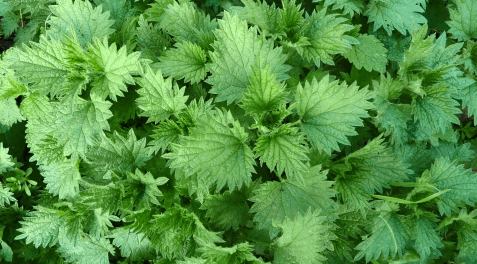
nettles
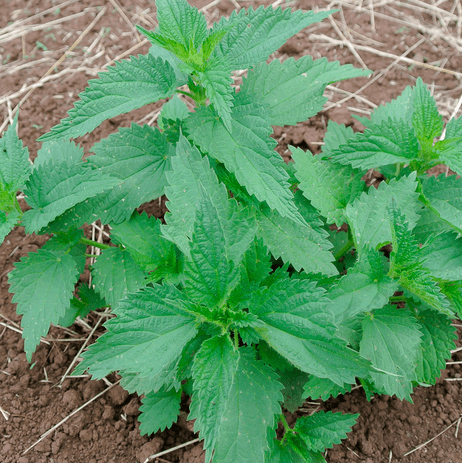
nettles
When: spring-fall
Where: Nettles generally appear in the same locations every year. They thrive in rich soil, moist woodlands, thickets, disturbed areas, along partially shaded trails and riversides.
What: Leaves, take care not to get stung.
Flavor: fresh, green, cooked like spinach
How to do it:
- Cook your quinoa by boiling the water with salt and add the quinoa. Let simmer at middle heat until done
- In a pan, add some oil and add the halloumi. After its startes to get golden, add the green beans and let them simmer until they are starting to get flashy green.
- Now add the quinoa. Put aside.
- In another pan, add the butter and roast the panko shortly and add the minced wild herbs.
- Add the wild-herb topping short before serving and enjoy.

Wild Herb Pesto with Quinoa by Truefoodsblog
Sources:
http://londonmiddlesexmastergardeners.com/invader-month-garlic-mustard/
https://www.countryfile.com/how-to/food-recipes/wild-garlic-guide-where-to-find-how-to-cook-it-and-recipe-ideas/
https://de.wikipedia.org/wiki/Giersch
https://www.ediblewildfood.com/stinging-nettle.aspx
https://www.gardenbetty.com/true-french-sorrel-and-your-garden-on-toast/







